Utilize this comprehensive nursing care plan and management guide to provide exceptional care for clients diagnosed with dysphagia or those with impairment in swallowing. This guide equips you with valuable insights into conducting thorough nursing assessments, implementing evidence-based interventions, establishing appropriate goals, and identifying nursing diagnoses related to dysphagia or impaired swallowing.
What is Dysphagia?
Dysphagia or impairment in swallowing involves more time and effort to transfer food or liquid from the mouth to the stomach. It occurs when the muscles and nerves that help move food through the throat and esophagus are not working right. It can be a temporary or permanent complication that can be fatal.
Recently, the medical literature has differentiated the terms ‘dysphagia’ and ‘swallowing impairment’. According to Rameau et. al, dysphagia refers to the client’s sensation of experiencing difficulty with swallowing. The symptom may include sensing obstruction to food passage, choking, or coughing during swallowing. In contrast, swallowing impairment refers to objective findings of deglutitive dysfunction observed by healthcare professionals (Rameau et al., 2022).
Aspiration of food or fluid can also occur possibly brought about by a structural problem, interruption or dysfunction of neural pathways, decreased strength or excursion of muscles involved in mastication, facial paralysis, or perceptual impairment. The swallowing muscles can become weak with age or inactivity. It is a common complaint among older adults, in those individuals who have had a stroke, suffered head trauma, have head or neck cancer, or experience progressive neurological diseases such as multiple sclerosis, amyotrophic lateral sclerosis, and Parkinson disease. Dysphagia can befall at any age, but it’s more prevalent in older adults.
The act of deglutition, or swallowing, is divided into four parts:
- Preparatory phase. This phase includes mastication of the bolus, mixing it with saliva, and dividing the food for transport through the pharynx and esophagus. The preparatory phase takes place in the oral cavity.
- Oral phase. The bolus is propelled from the oral cavity into the pharynx during the oral phase of swallowing.
- Pharyngeal phase. Passage of food through the pharynx and into the esophagus occurs during the pharyngeal phase of swallowing. Respiration and swallowing must be coordinated during this portion of the swallow since both functions occur through the common portal of the pharynx but not simultaneously.
- Esophageal phase. The bolus is transported down the esophagus into the stomach. This also consists of a peristaltic wave of contraction that propagates down the esophagus.
Causes
The causes of swallowing problems vary, and treatment depends on the cause.
- Central nervous system (CNS) disorders
- Stroke
- Brain tumor
- Neurodegenerative diseases
- Traumatic brain injury (TBI)
- Spinal cord injury (SCI)
- Peripheral nervous system (PNS) disorders
- Neuromuscular junction disorders
- Myopathy
- Peripheral neuropathy
- Other disorders (non-neurological and poor general medical condition)
- Head and neck local structural lesions
- Poor general medical condition
- Unknown etiology
Signs and Symptoms
The following are the common signs and symptoms or defining characteristics of a patient with dysphagia:
- Reports of sensation of food sticking in the throat
- Coughing or choking when eating or drinking
- Coughing at rest or between feedings
- Changes in taste
- Excessive oral secretions
- Wet or gurgling voice during or after eating
- Change in vocal quality while eating
- Regurgitation of food or fluids, including nasal regurgitation
- Pocketing food in the mouth
- Delayed swallowing initiation
- Fatigue during meals
- Difficulty chewing
- Uncoordinated chewing or swallowing
- Acute or chronic weight loss
- Wet, gurgling sounds with respiration
- Sneezing or coughing while eating
- Prolonged mealtimes
- Inability to manage saliva
- Aspiration or risk of aspiration leading to coughing or respiratory issues
- Drooling or food leakage from the mouth
Nursing Care Plans and Management
Nursing care plans for clients with dysphagia involve a comprehensive assessment of the client’s medical history, nutritional status, and the underlying cause of dysphagia. This information is important for developing individualized interventions that address the needs and risks associated with each client. These nursing care plans will aid the nurse in promoting safety and optimal nutritional status for the client.
Nursing Problem Priorities
The following are nursing priorities for clients diagnosed with swallowing impairment or dysphagia:
- Airway protection. Ensuring the safety of the client’s airway is of utmost priority.
- Nutritional support. Develop and implement a nutritionally balanced diet that addresses the client’s specific needs.
- Client and family education. Educate the client and their family or caregivers on dysphagia management, aspiration precautions, and dietary restrictions and modifications.
Nursing Assessment
Assessment is necessary to determine potential problems that may have led to dysphagia as well as handle any difficulty that may appear during nursing care.
Assess for the following subjective and objective data:
- The sensation of food sticking. This may reflect possible inability to propel bolus material properly, failure of the upper esophageal sphincter to relax, changes in mucosal integrity, esophageal conditions, or repeated reflux.
- Changes in taste. This suggests that the altered sensation in the oral cavity chemoreceptors may be related to neurogenic factors, alterations in oral or pharyngeal mucosa, medications, and/or treatment programs, and chemotherapy or radiation therapy.
- Coughing with food or liquid before, during, and after swallowing. This may be due to aspiration but may be due to pulmonary disease.
- Cough at rest/between feedings. This indicates possible aspiration of residual food or saliva.
- Excessive oral secretions. This may be related to poor sensation, copious or thick secretions, or the inability to effectively manage normally produced oral secretions.
- Acute or chronic weight loss. This indicates inadequate nutrition, or metabolic needs above nutritional intake, such as in depression or undiagnosed cancer.
- Change in vocal quality while eating. This may suggest the presence of materials in the larynx on the vocal folds.
- Wet or gurgling sounds with respiration. This suggests food or liquids in the pharynx and an inability to clear the pharynx or larynx.
- Fatigue. The client may experience fatigue during meals or during the time needed to complete meals.
Nursing Diagnosis
Following a thorough assessment, a nursing diagnosis is formulated to specifically address the challenges associated with impaired swallowing (dysphagia) based on the nurse’s clinical judgement and understanding of the patient’s unique health condition. While nursing diagnoses serve as a framework for organizing care, their usefulness may vary in different clinical situations. In real-life clinical settings, it is important to note that the use of specific nursing diagnostic labels may not be as prominent or commonly utilized as other components of the care plan. It is ultimately the nurse’s clinical expertise and judgment that shape the care plan to meet the unique needs of each patient, prioritizing their health concerns and priorities. However, if you still find value in utilizing nursing diagnosis labels, here are some examples to consider:
- Impaired Swallowing related to neuromuscular impairment (e.g., stroke, ALS) AEB difficulty initiating swallowing, coughing or choking during meals, and abnormal gag reflex.
- Impaired Swallowing related to mechanical obstruction (e.g., tumor, inflammation) AEB patient reporting sensation of food sticking in the throat, pain during swallowing, and weight loss.
- Impaired Swallowing related to cognitive impairment (e.g., dementia, traumatic brain injury) AEB patient’s inability to recognize food, improper use of utensils, and distraction during meals.
- Impaired Swallowing related to developmental delay in children AEB difficulty coordinating sucking and swallowing, frequent coughing or gagging while feeding, and slow weight gain.
- Impaired Swallowing related to psychological factors (e.g., anxiety, fear) AEB patient expressing fear of choking, avoidance of eating in front of others, and preference for liquid or soft diets.
- Impaired Swallowing related to side effects of treatments (e.g., radiation therapy, surgery) AEB patient reporting dry mouth, sore throat, and changes in taste sensation leading to difficulty swallowing.
- Impaired Swallowing related to decreased salivary production (e.g., Sjögren’s syndrome, medication side effects) AEB patient complaining of dry mouth, needing to drink fluids to swallow food, and difficulty managing saliva.
- Impaired Swallowing related to esophageal stricture or spasm AEB patient describing a sensation of tightness or constriction in the throat, regurgitation of food, and preference for soft or blended foods.
Nursing Goals
Goals and expected outcomes may include:
- The client will demonstrate safe swallowing with minimal or no risk of aspiration.
- The client will achieve and maintain a stable weight, and nutritional requirements will be met sufficiently.
- The client will effectively express their needs and preferences, and communication strategies will be established efficiently.
- The client will remain free from complications associated with dysphagia.
- The client and caregivers will demonstrate an understanding of dietary modifications, safe swallowing techniques, and signs of potential complications.
Nursing Interventions and Actions
Therapeutic interventions and nursing actions for clients with dysphagia may include:
1. Dysphagia Assessment
A comprehensive review of the client’s swallowing function, including the identification of any underlying causes of dysphagia should be conducted. Evaluation of the client’s cognitive and communication abilities is also essential, as these factors can impact their ability to follow dietary recommendations.
Assessing the ability to swallow and the potential for aspiration
Determine the client’s mental status. If the client is unable to care for self, oral hygiene must be provided by nursing personnel.
The level of consciousness and cognitive ability will influence how well the client can take care of themselves and may be able to comply with therapeutic recommendations. The nursing diagnosis of Bathing/Hygiene Self-care deficit is then also applicable.
Assess for pharyngeal reflex.
The pharyngeal reflex is elicited by asking the client to perform a dry swallow while the examiner holds three fingers on the external hypo-laryngeal axis; the index finger is placed on the hyoid bone. The middle finger is placed on the thyroid notch and the ring finger is placed on the cricoid ring. There should be an elevation in these structures, specifically about 2 to 2.5 centimeters during a dry swallow (Speyer et al., 2021).
Ask the client to cough; test for a gag reflex on both sides of the posterior pharyngeal wall (lingual surface) with a tongue blade. Do not rely on the presence of a gag reflex to determine when to feed.
The gag reflex can be elicited by stimulating the back of the pharynx with a tongue blade or probe. The lungs are usually protected against aspiration by reflexes such as cough or gagging. When reflexes are depressed, the client is at increased risk for aspiration.
Check for coughing or choking during eating and drinking.
These signs indicate aspiration. Coughing with food or liquid before, during, and after the swallow may be most likely due to aspiration but may also be due to pulmonary disease. Coughing at rest or between feedings may indicate possible residual food or saliva aspiration. A cough at rest may indicate chronic obstructive pulmonary disease (COPD), chronic bronchitis, or other preexisting pulmonary problems or reflux.
Assess the ability to swallow a small amount of water.
If aspirated, little or no harm to the client occurs. Many screening tools consist of trial swallows using water in various aliquots or a range of different viscosities. For example, the Toronto Bedside Swallowing Screening Test or TOR-BSST consists of two steps: the first step is screening for abnormalities in voice quality and tongue movement, and the second step consists of ten consecutive teaspoons of water. Any failed item during either the first or second step constitutes a positive screen result and indicates an increased risk for dysphagia and a need for referral for assessment.
Check for residual food in the mouth after eating.
Pocketed food may be easily aspirated at a later time. The oral phase of dysphagia is associated with poor formation of and control of the food bolus. It usually results in prolonged retention in the oral cavity. It can also be accompanied by drooling, food leakage from the mouth, and difficulty initiating swallowing.
Check for food or fluid regurgitation through the nares.
Regurgitation indicated the decreased ability to swallow food or fluids and an increased risk for aspiration. The pharyngeal phase of dysphagia is under involuntary control, and impairments here may show as delayed swallow reflex, decreased pharyngeal closure resulting in nasal regurgitation, decreased epiglottic movement, and decreased laryngeal elevation on swallowing. The client may feel a globus sensation in the neck or experience nasal regurgitation, aspiration, and reflux symptoms.
Implement or assist in swallowing studies, as indicated.
The goal of clinical evaluation of swallowing functions is to understand the nature of swallowing functions. The volume viscosity swallowing test (VVST) is performed with three different volumes (5, 10, and 20 milliliters) and three different viscosities (liquid, mildly thick, and extremely spoon-thick). The Gugging Swallowing Screen test (GUSS) applies different food consistencies (solid, semisolid, and liquid) and amounts of food/liquid. These two tests are among the best bedside swallowing tests as they resemble real swallowing functions with foods consumed in daily life.
Evaluate the results of swallowing studies as ordered.
A video-fluoroscopic swallowing study or the modified barium swallow study (MBSS) may be indicated to determine the nature and extent of any oropharyngeal swallowing abnormality, which aids in designing interventions. The client is observed eating a variety of foods at different consistencies, but the food is coated with barium, and the client is seated in front of an X-ray or fluoroscopy machine that allows for visualization of the swallowing mechanism and peristalsis. VFS is considered a gold standard assessment and can diagnose aspiration and other physiological problems in the pharyngeal phase.
Determine the client’s readiness to eat. The client needs to be alert, able to follow instructions, hold the head erect, and able to move the tongue in the mouth.
One of the focuses of physical examination is noting the client’s level of consciousness and how that may impact swallowing function. If one of these factors is missing, it may be desirable to withhold oral feeding and do enteral feeding for nourishment. Cognitive deficits can result in aspiration even if able to swallow adequately. The client’s cognitive abilities will also impact additional diagnostic tests and the client’s ability to cooperate with the objectives of these tests.
Classify food given to the client before each spoonful if the client is being fed.
Knowledge of the consistency of food to expect can prepare the client for appropriate chewing and swallowing techniques. For example, according to the International Dysphagia Diet Standardization Initiative (IDDSI) framework, jellies are considered transitional foods. Offering purees adjusted with a gelling agent may reduce aspiration risk in clients with moderate to severe dysphagia.
Evaluate nutritional status.
Malnutrition can be a contributing cause. Nutritional assessment involves collecting more detailed information through physical examination and nutrition-related tests such as the Short Nutritional Assessment Questionnaire and the Mini Nutritional Assessment Form, which determines the presence or absence of actual nutritional problems, identify problems, and recognize the severity of nutritional disorders.
Observe the ability to eat and drink.
Difficulty or inability to chew or swallow may occur secondary to the pain of inflamed or ulcerated oral and/or oropharyngeal mucous membranes. Keep in mind that the client’s swallowing capabilities may vary at different times of the day, before or after activities or medications. Observations made of the client during swallow can be of significance, such as changes in vocal quality while eating, coughing during or after swallowing, wet or gurgling sounds associated with respiration, and fatigue during meals.
Note the client’s oral hygiene practices.
Information gives direction on possible causative factors and guidance for subsequent education. Poor oral health and concomitant dysphagia are important risk factors for aspiration pneumonia. Oropharyngeal colonization by respiratory pathogens has been shown to play a key role in the pathophysiology of aspiration pneumonia.
Monitor the client’s fluid status to determine if adequate.
Dehydration predisposes clients to impaired oral mucous membranes. A dry mouth may contribute to oropharyngeal dysphagia and the inability to make a proper bolus from a lack of saliva.
Utilize validated patient-reported measures, as applicable.
Patient-reported measures play an important role in client-centered healthcare and can improve communication, client engagement, and self-efficacy as clients may be more involved in goal-setting. Among those self-report measures mainly targeting health-related quality of life are the Swallowing Quality of Life questionnaire (SWAL-QOL), the Dysphagia Handicap Index (DHI), and the MD Anderson Dysphagia Inventory (MDADI).
Performing physical examination
Evaluate the strength of facial muscles.
Cranial nerves VII, IX, X, and XII control motor function in the mouth and pharynx. The coordinated function of muscles innervated by these nerves is necessary to move a bolus of food from the mouth to the posterior pharynx for controlled swallowing. The face of the client should also be examined for any obvious asymmetries or outward signs of trauma. Facial musculature and sensation should be tested to rule out abnormalities of cranial nerves V (trigeminal) and VII (facial).
Observe for signs of aspiration and pneumonia. Auscultate lung sounds after feeding. Note new or wheezing, and note the elevated temperature. Notify the healthcare provider as needed.
The presence of new crackles or wheezing, an elevated temperature or white blood cell count, and a change in sputum could indicate aspiration of food. Older adults may be more susceptible to developing pneumonia due to lower functional status, age-associated changes in respiratory function, swallowing changes with age, and diminished respiratory clearance (Nativ-Zeltzer et al., 2021).
Weigh the client weekly.
This is to help evaluate nutritional status. Acute or chronic weight loss may indicate inadequate nutrition or metabolic needs above the client’s nutritional intake, such as depression or undiagnosed cancer.
Assess the oral cavity at least once daily and note any discoloration, lesions, edema, bleeding, exudate, or dryness. Assess the severity of ulcerations involving the intraoral soft tissues, including the palate, tongue, gums, and lips. Refer to a healthcare provider or specialist as appropriate.
Oral examination can show signs of oral disease, symptoms of systemic disease, drug side effects, or trauma of the oral cavity. Tooth loss causes changes in the anatomy of the oral cavity. It affects the oral phase of swallowing and impairs other phases. Tooth loss reduces masticatory performance and causes difficulties in the formation of a bolus, which may be larger and interfere with other swallowing efforts (Bayram et al., 2021). Sloughing of the mucosal membrane can progress to ulceration.
Inspect for any indication of infection, and culture lesions as needed. Refer to a healthcare provider, nurse, or specialist as appropriate.
Early evaluation promotes immediate treatment. Specific manifestations direct accurate treatment. Dysphagia caused by oral mucositis can further worsen the severity of oral lesions and aggravate systemic symptoms such as fatigue and anorexia, alongside psychological symptoms (Shetty et al., 2022).
Severe mucositis may manifest as any of the following:
- Candidiasis
Candidiasis is a fungal infection due to any type of Candida (a type of yeast). It manifests as cottage cheese-like white or pale yellowish patches on the tongue, buccal mucosa, and palate. - Herpes simplex
This is a common viral infection that manifests as a painful itching vesicle (typically on upper lips) that ruptures within 12 hours and becomes encrusted with a dried exudate. - Gram-positive bacterial infection (staphylococcal and streptococcal infections)
These lesions are dry, raised, wartlike yellowish-brown, round plaques on the buccal mucosa. - Gram-negative bacterial infections
Lesions are creamy to yellow-white, shiny, nonpurulent patches often seated on painful, red, superficial mucosal ulcers and erosions. - Fevers, chills, rigors
These symptoms result from the body’s attempt to increase its internal temperature to fight off infection and inflammation.
Check for mechanical agents such as ill-fitting dentures or chemical agents such as constant exposure to tobacco that could create or develop trauma to oral mucous membranes.
Irritative and causative agents for stomatitis should be eliminated. The use of full or partial dental prostheses induces constant friction in the oral mucosa, increasing the proliferative ability of microorganisms. This, in turn, can lead to oral candidiasis, also known as denture stomatitis, which is a fungal infection that affects most users of dental prostheses and can be exacerbated by factors such as poor hygiene, prosthetic material, prolonged use, night use, immunosuppression, and the fungal species involved (Jerônimo et al., 2022).
Inspect the status of the oral mucosa; including the tongue, lips, gums, saliva, teeth, and mucous membranes.
A well-organized assessment should be performed of the listed sites using a tongue blade to show areas of the oral cavity. This will identify any signs of inflammation, infection, or mucositis. This can also help in the early detection and management of oral health issues and prevent potential complications.
Assess the tone, strength, and mobility of the tongue.
The tone and strength of the tongue can be assessed by eliciting resistance against a tongue blade, while mobility is assessed by administering non-articulatory or articulatory praxis tasks.
Examine after removal of dental appliances. Use a moist, padded tongue blade to pull back the cheeks and tongue gently.
Denture removal is necessary because lesions may be underlying and further irritated by the appliance. Caregivers also need to be informed of the importance of these assessments.
Assess the client’s chewing ability if possible.
When assessing chewing it is important to evaluate the client’s ability to manage solids and to identify the risk of choking. Assessments such as the Test of Mastication and Swallowing of Solids (TOMASS) may be useful.
Include mealtime observation during the clinical swallowing evaluation (CSE).
When possible, a CSE should also include mealtime observation. This is particularly useful in clients with cognitive impairments where feeding and swallowing difficulties may be influenced by fluctuating levels of attention, fatigue, or environmental. Observations such as the client’s ability to self-feed, the need to use adaptive eating utensils, the duration of the meal, and the presence of fatigue are noted. The nurse may use standardized CSEs based on mealtime observation such as McGill Ingestive Skills Assessment (MISA) and Dysphagia Disorder Survey (DDS).
2. Protecting and Strengthening the Airway
Dysphagia can reduce the quality of life, compromise nutrition, and may result in penetration or aspiration of oropharyngeal secretions or food contents into the airway, compromising ventilation. When the material passes below the true vocal cords and into the trachea, this is termed aspiration. Aspiration results in a cough reflex as the body attempts to prevent the passage of foreign material into the airway. Silent aspiration may occur, which is when subglottic penetration fails to elicit a cough reflex (McCarty & Chao, 2021).
Before mealtime, provide adequate rest periods.
Fatigue can further add to swallowing impairment. Eating requires repeated submaximal contractions of the oropharyngeal musculature, carefully coordinated with respiration, and often communications and other cognitive and motor tasks, throughout the meal (Brates et al., 2022).
Eliminate any environmental stimuli (e.g., TV, radio)
The client can more concentrate when external stimuli are removed. Many clients use a great deal of their energy trying to focus, control their movements, and swallow at meal times.
Assist the client in eating as needed.
Clients with dysphagia should have observation while eating or drinking. They should be assisted with getting the food to their mouths if needed to preserve energy and to supply the nutrients needed.
Provide oral care before and after feeding. Clean and insert dentures before each meal.
Optimal oral care promotes appetite and eating. Additionally, oral hygiene is associated with decreased odds of pneumonia in clients diagnosed with stroke and nursing home residents. A strict routine of oral care can reduce aspiration pneumonia in clients with oropharyngeal dysphagia (Engh & Speyer, 2022).
If the client has impaired swallowing, consult a speech pathologist for bedside evaluation as soon as possible. Ensure that the client is seen by a speech pathologist within 72 hours after admission if the client has had a cerebrovascular accident (CVA).
Speech pathologists specialize in impaired swallowing. Early referral of CVA clients to a speech pathologist and early initiation of nutritional support results in decreased length of hospital stay, shortened recovery time, and reduced overall health costs. According to a study, all stroke clients should be screened for malnutrition risk within 48 hours of hospitalization, ideally in the first 24 hours (Oliveira et al., 2022).
For impaired swallowing, use a dysphagia team composed of a rehabilitation nurse, speech pathologist, dietitian, healthcare provider, and radiologist who work together.
The dysphagia team can help the client learn to swallow safely and maintain a good nutritional status. Clients with impaired swallowing who are malnourished, or at risk of malnutrition, should receive supplementary nutritional therapy through an individualized nutritional plan developed and monitored by a nutritionist in collaboration with a multidisciplinary team.
Place suction equipment at the bedside, and suction as needed.
With impaired swallowing reflexes, secretions can rapidly accumulate in the posterior pharynx and upper trachea, increasing the risk of aspiration. A novel portable non-invasive suction device has been developed, which may have significant utility during a choking emergency. The LifeVac device is FDA-registered. It is simple to use, lightweight, portable, and non-powered and includes a plunger with a patented one-way valve such that when the plunger is depressed, the air is forced out the sides and not into the client. When the plunger is pulled back, suction is applied. This device attaches to a standard facemask, creating a seal over the nose and the mouth. Upon pulling the plunger, the object is removed from the airway (McKinley et al., 2022).
Practice swallowing maneuvers with the client as indicated.
Swallowing maneuvers is an effective modality for older adults and can be tried as a second-line treatment method. These are behavioral interventions used to establish safe and effective swallowing and are recommended in combination therapy for dysphagia. The Mendelsohn maneuver involves the voluntary holding of hyolaryngeal elevation during the peak phase of swallowing. However, it can cause muscle fatigue in older adults. This maneuver is recommended for cognitively and physically fit clients.
Promote oral sensory stimulation.
The goal of oral sensory stimulation is to increase the sensitivity of these receptors and to initiate and accelerate the oropharyngeal swallowing response. Cold and tactile stimulation can improve the transition from the oral to the pharyngeal phase by increasing oral awareness.
Assist the client in performing head and neck range-of-motion (ROM) exercises.
Exercises are more effective and active methods than compensatory mechanisms. Head and neck ROM and strengthening exercises can be effective in creating the correct feeding posture. Cervical flexion strengthening exercise or the Shaker exercise improves hyoid and laryngeal elevation, increases upper esophageal sphincter opening, reduces pharyngeal residuals, and improves dysphagia symptoms.
Promote oropharyngeal exercise for older adults.
Oropharyngeal exercises may be effective in older adults due to the loss of elasticity in the tissue with aging. Recent studies have evaluated the effectiveness of tongue muscle strengthening exercises as tongue propulsion strength and squeezing pressure against the palate are closely related to swallowing disorders. Tongue-strengthening exercises improve swallowing phase intervals and food intake in older adults.
Aspiration precautions
Position the client upright at a 90-degree angle with the head flexed forward at a 45-degree angle.
This position allows the trachea to close and the esophagus to open, which makes swallowing easier and reduces the risk of aspiration. Another common postural modification considered to be effective is the chin-tuck position, which prepares the airway for swallowing by reducing the rate of bolu passage, especially in clients with preterm escape (Umay et al., 2022).
Ensure the client is awake, alert, and able to follow sequenced directions before attempting to feed.
As the client becomes less alert the swallowing response decreases, which increases the risk of aspiration. The nurse also completes a clinical observation of the client noting body posture, head posture at rest, level of alertness, ability to follow assessment instructions, upper respiratory tract secretions, and the client’s ability to manage his/her saliva.
Begin by feeding the client one-third teaspoon of applesauce. Provide sufficient time to masticate and swallow.
Gravy or sauce added to dry foods facilitates swallowing. Some healthcare professionals prefer to start with thickened consistencies to reduce the risk of aspiration. In older adults with chronic dysphagia, texture modification such as pureeing and mincing, and thickened liquids such as nectar, honey, and pudding consistencies are moderately recommended.
Place food on the unaffected side of the tongue.
Placing food on the unaffected side can help the client control the movement and direction of the food, decreasing the risk of it entering the airway. Symptoms related to the oral phase disorder such as the presence of oral residue, drooling, and difficulty in lip closure, chewing, and tongue movements can be observed.
During feeding, give the client-specific directions (e.g., “Open your mouth, chew the food completely, and when you are ready, tuck your chin to your chest and swallow”).
Proper instruction and focused concentration on specific steps reduce risks. Mealtime assistance and verbal prompting were associated with increased nutritional intake among older adults. Ensure that the client chews completely, eats gently, and swallows frequently, especially if extra saliva is produced. Give the client direction or reinforcement until he or she has swallowed each mouthful. Such directions assist in keeping one’s focus on the task.
Maintain the client in a high-Fowler position with the head flexed slightly forward during meals.
Aspiration is less likely to happen in this position. A supine position of at least 60°, and ideally 90°, can prevent residual, penetration, and aspiration by altering swallowing structures to protect the respiratory tract and also affects the esophageal phase with gravity.
Observe for uncoordinated chewing or swallowing; coughing shortly after eating or delayed coughing, which may mean silent aspiration; pocketing of food; wet-sounding voice; sneezing when eating; delay of more than one second in swallowing; or a variation in respiratory patterns. If any of these signs are present, put on gloves, eliminate all food from the oral cavity, end feedings, and consult with a speech and language pathologist and a dysphagia team.
These are signs of impaired swallowing and possible aspiration. Almost all studies in older adults have reported changes in eating habits (reduced volume, changed consistency, and increased meal times) with increasing age. Bolus formation and chewing ability especially decrease owing to age-related changes in swallowing function, in addition to changes in the choice of food consistency.
Place whole or crushed pills in custard, gelatin, or yogurt. (First, ask a pharmacist which pills should not be crushed.) Substitute medication in an elixir form as indicated.
Mixing some pills with foods helps reduce the risk of aspiration. Yogurt may be preferred for mixing crushed medications as it has been shown to have a relatively small impact on the dissolution rate of crushed medications producing similar rates as whole tablets compared to other vehicles such as water, juice, jam, or thickened fluids (Forough et al., 2020).
Keep the client upright for 30 to 45 minutes after a meal.
An upright position guarantees that food stays in the stomach until it has emptied and decreases the chance of aspiration following meals. Lifting the head while lying down and remaining in a sitting position for at least 30 minutes after meals are recommended for postural modifications in clients with gastroesophageal reflux.
3. Providing Adequate Nutritional Support
Dysphagia leads to poor prognosis with the increased risk of malnutrition, dehydration, choking and aspiration pneumonia, rehospitalization rates, and mortality. Malnutrition is a critical concern because it frequently occurs in clients with dysphagia and worsens their quality of life (Ueshima et al., 2022).
If the client has impaired swallowing, do not feed until an appropriate diagnostic workup is completed. Ensure proper nutrition by consulting with a for enteral feedings, preferably a PEG tube in most cases.
Feeding a client who cannot sufficiently swallow results in aspiration and possibly death. Enteral feedings via PEG tube are generally preferable to nasogastric tube feedings because studies have shown that there is increased nutritional status and possibly improved survival rates. Nasogastric tubes should be chosen for clients who require short-term tube feeding (two to four weeks), while PEG should be used in clients who require or are expected to require enteral feeding long-term (>28 days).
Before feeding, provide the client a lemon wedge, pickle, or tart-flavored hard candy or use artificial saliva if decreased salivation is a contributing factor.
Moistening and using tart flavors stimulate salivation, lubricate food, and improve the ability to swallow. A loss of sense of taste, decreased numbers of sensory receptors, and changes in salivary rheology typically occur with aging.
Advance slowly, giving small amounts; whenever possible, alternate servings of liquids and solids.
This technique helps prevent foods from being left in the mouth. Modifications such as reduced portions and increased meal numbers, providing bite-sized food, removing problematic foods such as hard solids from the meal, eating slowly, and drinking liquid with each bite can also be implemented.
Incorporate a texture-modified diet or thickened liquid administration as appropriate.
Texture-modified diets and thickened liquid administration are important interventions that help clients with dysphagia swallow safely and effectively. The International Dysphagia Diet Standardization Initiative (IDDSI) framework has five meal types (regular/easy-to-chew, soft and bite-sized, minced and moist, pureed, and liquidized) and five thickened liquid types (extremely, moderately, mildly, slightly, and thin). Offering purees adjusted with a gelling agent may reduce aspiration risk in clients with moderate to severe dysphagia.
Encourage a high-calorie diet that involves all food groups, as appropriate. Improve the nutrient density in the diet.
Increased nutrient density is highly effective as a means of food fortification. Increasing nutrient density does not affect hunger, satiety, or appetite and could be an effective intervention. Increasing nutrient density can enhance satisfaction with swallowing-adjusted diets, increase nutrient intake, and improve nutritional status, especially when medium-chain triglyceride oil, protein powders, and nutritious foods are added.
Provide nutritious snacks.
The European Society for Clinical Nutrition and Metabolism (ESPEN) guideline on clinical nutrition and hydration recommends providing snacks to increase nutritional intake. Some reports claim that older adults with dysphagia prefer nutritious snacks, suggesting the benefits of snack intake.
If client pouches food to one side of their mouth, encourage them to turn their heads to the unaffected side and manipulate the tongue to the paralyzed side.
Foods placed on the unaffected side of the mouth promote complete chewing and movement of food to the back of the mouth, where it can be swallowed. These strategies aid in cleaning out residual food. Cervical flexion strengthening exercises may improve hyoid and laryngeal elevation, increase upper esophageal sphincter opening, reduce pharyngeal residuals, and improve dysphagia symptoms.
If the client tolerates single-textured foods such as pudding, hot cereal, or strained baby food, advance to a soft diet with guidance from the dysphagia team. Avoid foods that are difficult to chew. Also, avoid sticky foods such as peanut butter and white bread.
The dysphagia team should determine the appropriate diet for the client based on progression in swallowing and ensuring that the client is nourished and hydrated. Texture modification is used to prevent the risk of aspiration. However, long-term use of texture modification causes energy and protein deficiency due to single and limited consistency and decreased quality of life.
Encourage the client to feed self as soon as possible.
With self-feeding, the client can establish the volume of a food bolus and the timing of each bite to promote effective swallowing. Self-feeding is preferred over feeding by caregivers or healthcare providers to mimic typical eating and drinking patterns.
If oral intake is not possible or is inadequate, initiate alternative feedings (e.g., nasogastric feedings, gastrostomy feedings, or hyperalimentation).
Optimal nutrition is a client’s need. Guidelines and reviews have reported that the use of NGTs and PEGs greatly reduces the incidence of aspiration pneumonia and ensures adequate and balanced nutrition. To avoid unnecessary use or overuse, these feeding methods have been conditioned to be useful for clients with severe dysphagia and/or high dysphagia risk and/or clients with malnutrition/malnutrition risk.
For many adult clients, avoid using straws if recommended by a speech pathologist.
The use of straws can increase the risk of aspiration because straws can result in the spilling of a bolus of fluid in the oral cavity as well as decrease control of the posterior transit of fluid to the pharynx.
Praise the client for successfully following directions and swallowing appropriately.
Praise reinforces the behavior and sets up a positive atmosphere in which learning takes place. In older adult clients, a combination of physical support, including slicing food and bringing it closer to the mouth, and social support, including dialog, encouragement, and emotional support, improve their mealtime satisfaction.
Refer the client to the dietitian for instructions on maintaining a well-balanced diet.
Nutritional expertise may be necessary to optimize the therapeutic diet needed to facilitate healing. Registered dietitians need to provide individualized and specialized nutritional management through appropriate assessment of the nutritional characteristics of the client with dysphagia.
Administer oral nutritional supplements (ONS) as indicated.
Intervention with ONs is an effective strategy to optimize nutritional intake. Early provision of ONS to clients at risk for malnutrition is expected to be cost-effective. ONS increases protein intake and serum albumin levels in older adult clients.
Administer IV fluids as added support to oral nutrition.
Short-term IV support in clients who will return to oral administration for a period not exceeding 72 hours is accepted. Parenteral hydation to support enteral nutrition is also recommended, because adequate fluid is critical for healing and general well-being.
Refer the client with stroke for a dysphagia rehabilitation program.
Dysphagia is an indicator of mortality and morbidity in clients with stroke, decreases the quality of life independently from other complications, and causes dysphagia-related complications such as malnutrition, dehydration, and aspiration pneumonia. Guidelines and meta-analyses are recommended that rehabilitation should be started as soon as possible and diagnosed is established.
4. Providing Oral Hygiene
Swallowing impairment and poor oral health were identified as independent risk factors for mortality in frail older adults. Studies have shown that intensified oral hygiene strategies can significantly reduce the incidence of aspiration pneumonia in older adults. Maintaining optimal oral care also demonstrates a reduced risk of aspiration in clients after stroke (Remijn et al., 2022).
Stop the use of a toothbrush and flossing.
Brushing could increase damage to ulcerated tissues. A disposable foam stick (Toothette) or sterile cotton swab is a way to gently apply cleansing solutions. The mouth should be rinsed at least four times a day with the use of alcohol-free mouthwash.
Provide gentle oral care for the client with oral mucositis.
Use foam sticks to moisten the oral mucous membranes, clean out debris, and swab out the mouth of the edentulous client. Do not use it to clean the teeth or the platelet count is meager, and the client is prone to bleeding gums. Studies have revealed that foam sticks are not effective in removing plaque from teeth.
Maintain the inside of the mouth moist with frequent sips of water and salt water rinses.
Moisture promotes the cleansing effect of saliva and helps avert mucosal drying, which can result in erosions, fissures, or lesions. Artificial saliva, dry mouth gums, and honey can also be used to keep the mouth lubricated to avoid any trauma (Singh & Singh, 2020).
Provide scrupulous oral care to critically ill clients.
Cultures of the teeth of critically ill clients have produced notable bacterial colonization, which can cause nosocomial pneumonia. Considering clients admitted to the intensive care units often have poor oral hygiene, protocols such as the use of 0.12% chlorhexidine can be implemented.
Ensure that removable dentures are cleaned daily and meticulously.
Dental prostheses can become a reservoir for microorganisms, and the prevalence of older adults who use dental prostheses is generally high. Mechanical cleaning of the prosthesis is highly recommended. Brushing three times a day with a soft brush and non-abrasive toothpaste, and immersing it weekly in 0.5% sodium hypochlorite solution (for dentures without metallic surfaces) or 0.12% chlorhexidine for ten minutes.
If whitish plaques are evident in the mouth or on the tongue and can be rubbed off readily with gauze, leaving a red base that bleeds, suspect a fungal infection and contact the healthcare provider for follow-up.
Oral candidiasis (moniliasis) is remarkably common secondary to antibiotic therapy, steroid therapy, HIV infection, diabetes, or immunosuppressive drugs and should be treated with oral or systemic antifungal agents. The oral cavity’s teeth and mucosal surfaces should be cleaned daily with a soft brush or a gauze soaked with 0.2% chlorhexidine.
Give local antimicrobial agents as ordered.
Mycostatin, nystatin, and Mycelex Troche are commonly prescribed. Nystatin is recommended as the drug of choice for oral candidiasis due to its effectiveness, absence of serious side effects by oral use, and reduced cost compared to other drugs.
Provide mucosal protectants as indicated.
There are mucosal protectant agents such as Gelclair and Zilactin which work by coating mucosa on exposed nerve endings so that clients can have food and tongue mobility for eating and speaking.
Offer alternative methods for oral mucositis as recommended.
Herbal medicines have anti-inflammatory, antioxidant, antiseptic, sedative, and wound-healing properties. The role of honey as an anti-inflammatory is proven. It inhibits prostaglandin levels both in plasma and mucosal tissues. Some medicinal herbs have analgesic effects which are very important in ulcerative forms of mucositis. For instance, ginger extract contains analgesic compounds namely gingerol and shogaol.
5. Providing Client and Family Education
Providing extensive education to both the client and their caregivers on dysphagia management strategies, including safe swallowing techniques, dietary modifications, and signs of complications can help them adapt to home care and improve their quality of life.
Discuss and demonstrate the following to the client or caregiver:
- Avoidance of certain foods or fluids
- Upright position during eating
- Allowance of time to eat slowly and chew thoroughly
- Provision of high-calorie meals
- Use of fluids to help facilitate the passage of solid foods
- Monitoring of the client for weight loss or dehydration
The client and caregiver may need to be active participants in implementing the treatment plan to optimize safe nutritional intake. It is important to provide healthy nutrition for the client; oral health, swallowing, and masticatory performance should be evaluated periodically.
Discuss the importance of exercise to enhance the muscular strength of the face and tongue to enhance swallowing.
Muscle strengthening can facilitate greater chewing ability and positioning of food in the mouth. Tongue-strengthening exercises improve swallowing phase intervals and food intake in older adults. Additionally, strengthening exercises of the swallowing muscles in the oropharyngeal areas provide formation and control of the bolus and reduce the risk of aspiration.
Educate the client, family, and all caregivers about rationales for food consistency and choices.
It is common for family members to disregard necessary dietary restrictions and give clients inappropriate foods that predispose them to aspiration. Educate the client and their family about the possibility of the client’s unconscious elimination of solid food from their diets and modifying them by prolonging meal time or consuming less. Explain that this can be done effectively under the supervision of a healthcare professional so that the negative effects can be minimized.
Educate the client and family about the importance of dysphagia rehabilitation program.
Education and information add to the conventional rehabilitation program about complications, severity of disease, and precautions to be taken have shown that it both facilitates the client’s acceptance of the disease and increases communication with the caregiver.
Educating about oral care and hygiene
Plan and implement a meticulous mouth care regimen after each meal regularly and every four hours while awake.
Mouth care prevents the formation of oral plaques and bacteria. Clients with oral catheters and oxygen may require additional care. Regular oral hygiene and dental care reduce the colonization of virulent bacteria and the incidence of aspiration pneumonia, increase sensory sensitization and improve the sensitivity of the cough reflex.
Increase the frequency of oral hygiene by rinsing with one of the suggested solutions between brushings and once during the night especially if signs of mild stomatitis (dryness and burning; mild erythema and edema along mucocutaneous junction) occur.
This will reduce further damage and may promote comfort. Chemical control of oral pathogens with 0.12% chlorhexidine appears to be more effective in preventing ventilator-associated pneumonia than mechanical removal by brushing alone.
Provide systemic or topical analgesics as prescribed.
This will provide comfort and relieve pain. Topical analgesics are essential for pain control, and consequently for appropriate food and fluid intake, communication, and sleep. Studied topical analgesics include 0.5% or 1% phenytoin, 1% or 2% morphine, doxepin, and sucralfate (Sant Ana et al., 2020).
Discontinue flossing if it causes pain. Use a pediatric toothbrush or a soft-bristled toothbrush to avoid mucosal trauma.
Increased sensitivity to pain results from thinning of the oral mucosal lining. If the client is unable to use a soft toothbrush or floss due to pain, they are encouraged to use something soft like a piece of cloth, cotton, or padded spatula to wipe their mouths or use mouthwash to frequently rinse their mouth.
Explain that topical analgesics can be administered as “swish and swallow” or “swish and spit” 15 to 20 minutes before meals, or painted on each lesion immediately before mealtime.
Each treatment must be performed as prescribed for optimal results. The client should hold the solution for several minutes before expectoration. This measure enhances the therapeutic effect.
Explain the use of topical protective agents.
A variety of more protective agents are available to coat the lesions and promote healing as prescribed.
- Zilactin or Zilactin-B
This medicated gel contains benzocaine for pain and is painted on the lesion and allowed to dry to form a protective seal and promote the healing of mouth sores. - Gelclair
This is a bioadherent oral gel that covers the oral cavity and forms a protective barrier to relieve pain. - Substrate of an antacid and kaolin preparation.
The substance is prepared by allowing the antacid to settle. The pasty residue is swabbed onto the inflamed areas and after 15 to 20 minutes, rinsed with saline or water. The residue remains as a protectant on the lesion. - Palifermin
This agent decreases the incidence and duration of severe oral mucositis in clients with hematological cancers undergoing high-dose chemotherapy followed by bone marrow transplantation.
Use tap water or normal saline to provide oral care; do not use commercial mouthwashes containing alcohol or hydrogen peroxide. Also, do not use lemon-glycerin swabs.
Alcohol dries the oral mucous membranes. Hydrogen peroxide can injure oral mucosa and is remarkably foul-tasting to patients. Lemon-glycerin swabs can result in decreased salivary amylase and oral moisture and erosion of tooth enamel.
Instructing about appropriate nutritional practices
- Encourage a diet high in protein and vitamins.
- Serve foods and fluids lukewarm or cold.
- Serve frequent small meals or snacks spaced throughout the day.
- Encourage soft foods (e.g., mashed potatoes, puddings, custards, and creamy cereals).
- Encourage the use of straw.
- Encourage peach, pear, apricot nectars, and fruit drinks instead of citrus juices.
Dietary modifications may be needed to facilitate healing and tissue integrity. These modifications are the most recommended compensatory methods for treating dysphagia. Modifications such as volume, viscosity, bolus, and texture changes are common methods.
Instruct the client to avoid alcohol or hydrogen peroxide-based commercial products for mouth care and to avoid other irritants to the oral cavity (e.g., tobacco, spicy foods).
Oral irritants can further break and infect the oral mucosa and increase the client’s discomfort. Acidic foods such as grapes, tomatoes, alcohol, tobacco, and spicy food should be avoided.
Instructing the client and caregiver on home care
Lightly brush all surfaces of the teeth, gums, and tongue with a soft-bristled nylon or foam brush. Floss smoothly.
Careful mechanical cleansing and flossing loosens debris, stimulates circulation, and reduces the risk of infection. A study revealed that nurses encourage clients to perform proper oral hygiene using a soft toothbrush. The use of something soft like a piece of cloth, cotton, or padded spatula can also be utilized to wipe the client’s oral mucosa. (Raymond & Agyeman-Yeboah, 2023)
Remove and brush dentures properly after meals as necessary. Have loose-fitting dentures adjusted.
Dental care is key to reducing the risk of infection and improving appetite. Rubbing and irritation from ill-fitting dentures promote breakage and injury of the oral mucosa. The use of full or partial dental prostheses induces constant friction in the oral mucosa, increasing the proliferative ability of microorganisms. This can lead to oral candidiasis, also known as denture stomatitis, which is a fungal infection that affects most users of dental prostheses.
Rinse the mouth thoroughly during and after brushing.
Removing food particles decreases the risk of infection related to trapped decaying food. Non-medicated rinses such as sodium bicarbonate and saline can be used for the prevention of oral mucositis.
Include food items with each meal that require chewing.
Chewing stimulates gingival tissue and promotes circulation. Recent studies have evaluated the effectiveness of tongue muscle strengthening exercises as tongue propulsion strength and squeezing pressure against the palate are closely related to swallowing disorders.
Educate the client on how to inspect the oral cavity and monitor for signs and symptoms of infection, complications, and healing.
Build on the client’s existing knowledge to develop an individualized plan of care. Education and information involving clients and their families are effective rehabilitation modalities and are recommended as a first-line treatment method.
Educate the client and caregiver about the appropriate positioning during mealtimes.
Orally ded clients should be able to maintain a sitting poition as much as possible, and non-oral enterally fed clients should be taken minimum 30 to 45° reclining position. A reclining position ensures the front of the oral cavity is raised and the back is lowered. This position facilitates the flow of the bolus from the mouth to the pharynx with the force of gravity as well as proives protection of the respiratory tract.
Explain the advantages and disadvantages of texture modification and thickeners.
Texture modification and thickeners are used to prevent the risk of aspiration. However, long-term use of texture modification causes energy and protein deficiency due to single and limited consistency, and decreased quality of life. New thickeners, which are based on xanthan gum, are amylase resistant, stable over time and more palatable compared to the classical thickeners based on starch.
Recommended Resources
Recommended nursing diagnosis and nursing care plan books and resources.
Disclosure: Included below are affiliate links from Amazon at no additional cost from you. We may earn a small commission from your purchase. For more information, check out our privacy policy.
Ackley and Ladwig’s Nursing Diagnosis Handbook: An Evidence-Based Guide to Planning Care
We love this book because of its evidence-based approach to nursing interventions. This care plan handbook uses an easy, three-step system to guide you through client assessment, nursing diagnosis, and care planning. Includes step-by-step instructions showing how to implement care and evaluate outcomes, and help you build skills in diagnostic reasoning and critical thinking.

Nursing Care Plans – Nursing Diagnosis & Intervention (10th Edition)
Includes over two hundred care plans that reflect the most recent evidence-based guidelines. New to this edition are ICNP diagnoses, care plans on LGBTQ health issues, and on electrolytes and acid-base balance.

Nurse’s Pocket Guide: Diagnoses, Prioritized Interventions, and Rationales
Quick-reference tool includes all you need to identify the correct diagnoses for efficient patient care planning. The sixteenth edition includes the most recent nursing diagnoses and interventions and an alphabetized listing of nursing diagnoses covering more than 400 disorders.

Nursing Diagnosis Manual: Planning, Individualizing, and Documenting Client Care
Identify interventions to plan, individualize, and document care for more than 800 diseases and disorders. Only in the Nursing Diagnosis Manual will you find for each diagnosis subjectively and objectively – sample clinical applications, prioritized action/interventions with rationales – a documentation section, and much more!

All-in-One Nursing Care Planning Resource – E-Book: Medical-Surgical, Pediatric, Maternity, and Psychiatric-Mental Health
Includes over 100 care plans for medical-surgical, maternity/OB, pediatrics, and psychiatric and mental health. Interprofessional “patient problems” focus familiarizes you with how to speak to patients.

References and Sources
References and sources used for this nursing diagnosis guide for impaired swallowing (dysphagia).
- Bayram, H. M., Ilgaz, F., Serel-Arslan, S., Demir, N., & Rakicioglu, N. (2021). The relationship between dysphagia, oral health, masticatory performance and activities of daily living in elderly individuals as assessed by the Eating Assessment Tool. Progress in Nutrition, 23(1).
- Brates, D., Harel, D., & Molfenter, S. M. (2022). Perception of Swallowing-Related Fatigue Among Older Adults. Journal of Speech, Language, and Hearing Research, 65(8).
- Engh, M. C. N., & Speyer, R. (2022). Management of Dysphagia in Nursing Homes: A National Survey. Dysphagia, 37.
- Forough, A. S., Lau, E. T.L., Steadman, K. J., Kyle, G. J., Cichero, J. A.Y., Santos, J. M. S., & Nissen, L. M. (2020). Factors that affect health-care workers’ practices of medication administration to aged care residents with swallowing difficulties: An Australia-wide survey study. Australasian Journal on Ageing.
- Jerônimo, L. S., Lima, R. P. E., Discacciati, J. A. C., & Bhering, C. L. B. (2022). Oral Candidiasis and COVID-19 in Users of Removable Dentures: Is Special Oral Care Needed? Gerontology, 68.
- Leonard, R., & Kendall, K. (Eds.). (2023). Dysphagia Assessment and Treatment Planning: A Team Approach (5th ed.). Plural Publishing, Incorporated.
- McCarty, E. B., & Chao, T. N. (2021). Dysphagia and Swallowing Disorders. Medical Clinics, 105(5).
- McKinley, M. J., Deede, J., & Markowitz, B. (2022). Use of a Novel Portable Non-powered Suction Device in Patients With Oropharyngeal Dysphagia During a Choking Emergency. Frontiers in Medicine, 2021(8).
- Nativ-Zeltzer, N., Nachalon, Y., Kaufman, M. W., Seeni, I. C., Bastea, S., Aulakh, S. S., Makkiyah, S., Wilson, M. D., Evangelista, L., Kuhn, M. A., Sahin, M., & Belafsky, P. C. (2021). Predictors of Aspiration Pneumonia and Mortality in Patients with Dysphagia. The Laryngoscope, 132(6).
- Oliveira, I. d. J., Couto, G. R., Santos, R. V., Campolargo, A. M., Lima, C., & Ferreira, P. L. (2022). Best Practice Recommendations for Dysphagia Management in Stroke Patients: A Consensus from a Portuguese Expert Panel. Portuguese Journal of Public Health, 39(3).
- Rameau, A., Katz, P., Andreadis, K., Drenis, S., Joseph, I. T., Tran, A., Han, G., Sarhadi, K. S., Kaufman, M., & Belafsky, P. (2022). Clarifying Inaccurate Terminology: The Important Difference Between Dysphagia and Swallowing Dysfunction. Foregut: The Jourmal of the American Foregut Society, 2(1).
- Raymond, B. M., & Agyeman-Yeboah, J. (2023). Nurses’ knowledge on assessment and management of cancer therapy-associated oral mucositis. Nursing Open, 10(11).
- Remijn, L., Sanchez, F., Heijnen, B. J., Windsor, C., & Speyer, R. (2022). Effects of Oral Health Interventions in People with Oropharyngeal Dysphagia: A Systematic Review. Journal of Clinical Medicine, 11(12). h
- Sant Ana, G., Normando, A. G. C., de Toledo, I. P., dos Reis, P. E. D., & Guerra, E. N. S. (2020). Topical Treatment of Oral Mucositis in Cancer Patients: A Systematic Review of Randomized Clinical Trials. Asian Pacific Journal of Cancer Prevention, 21(7).
- Shetty, S. S., Maruthi, M., Dhara, V., de Arruda, J. A. A., Abreu, L. G., Mesquita, R. A., Teixeira, A. L., Silva, T. A., & Merchant, Y. (2022). Oral mucositis: Current knowledge and future directions. Disease-a-Month, 68(5).
- Singh, V., & Singh, A. K. (2020). Oral mucositis. National Journal of Maxillofacial Surgery, 11(2).
- Speyer, R., Cordier, R., Farneti, D., Nascimento, W., Pilz, W., Verin, E., Walshe, M., & Woisard, V. (2021). White Paper by the European Society for Swallowing Disorders: Screening and Non-instrumental Assessment for Dysphagia in Adults. Dysphagia, 37.
- Ueshima, J., Shimizu, A., Maeda, K., Uno, C., Shirai, Y., Sonoi, M., Motokawa, K., Egashira, F., Kayashita, J., Kudo, M., Kojo, A., & Momosaki, R. (2022). Nutritional Management in Adult Patients With Dysphagia: Position Paper From Japanese Working Group on Integrated Nutrition for Dysphagic People. Journal of the American Medical Directors Association, 23(10).
- Umay, E., Eyigor, S., Bahat, G., Halil, M., Giray, E., Unsal, P., Unlu, Z., Tikiz, C., Vural, M., Cincin, A. T., Bengisu, S., Gurcay, E., Keseroglu, K., Aydeniz, B., Karaca, E. C., Karaca, B., Yalcin, A., Ozsurekci, C., Seyidoglu, D., … Ozturk, E. A. (2022). Best Practice Recommendations for Geriatric Dysphagia Management with 5 Ws and 1H. Annals of Geriatric Medicine and Research, 26(2).
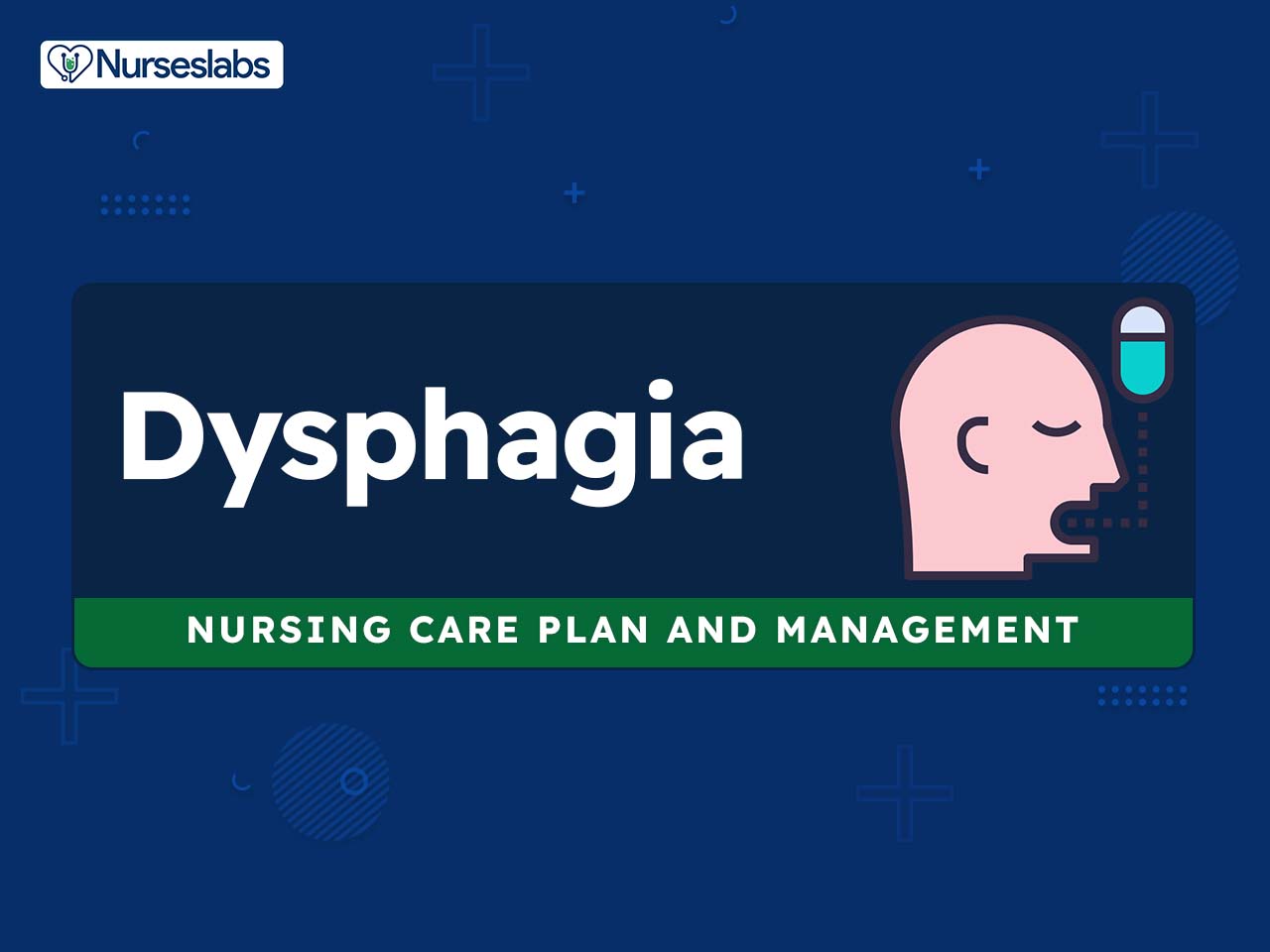















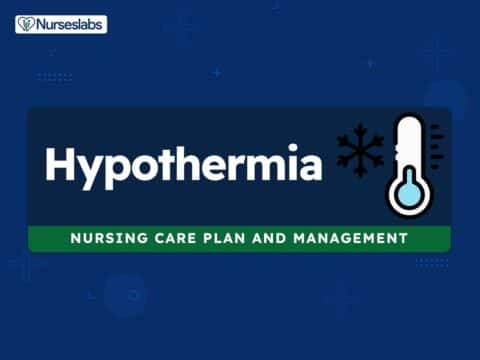
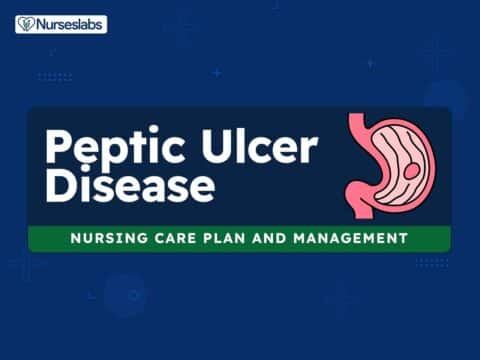





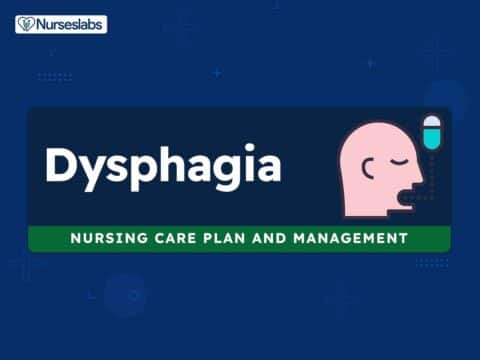

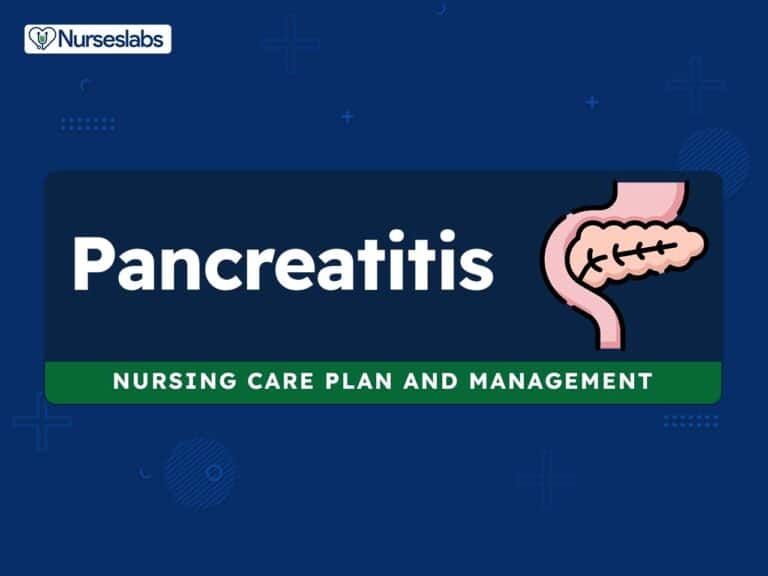

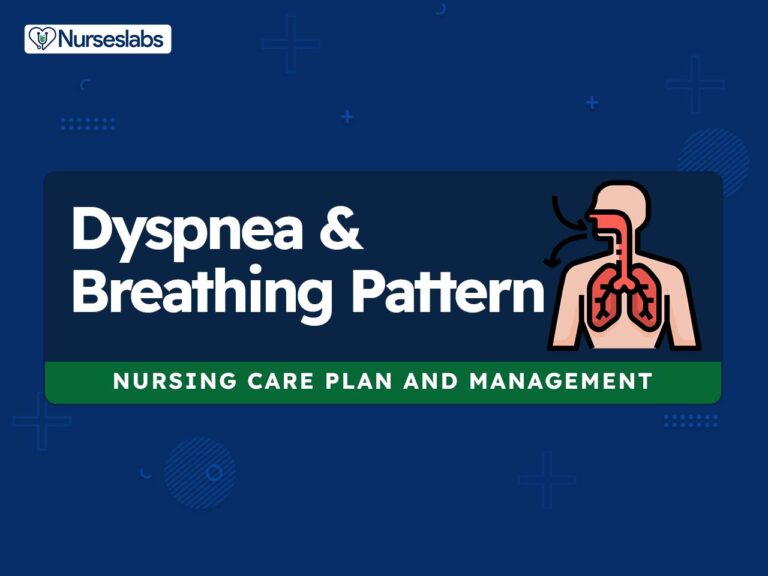
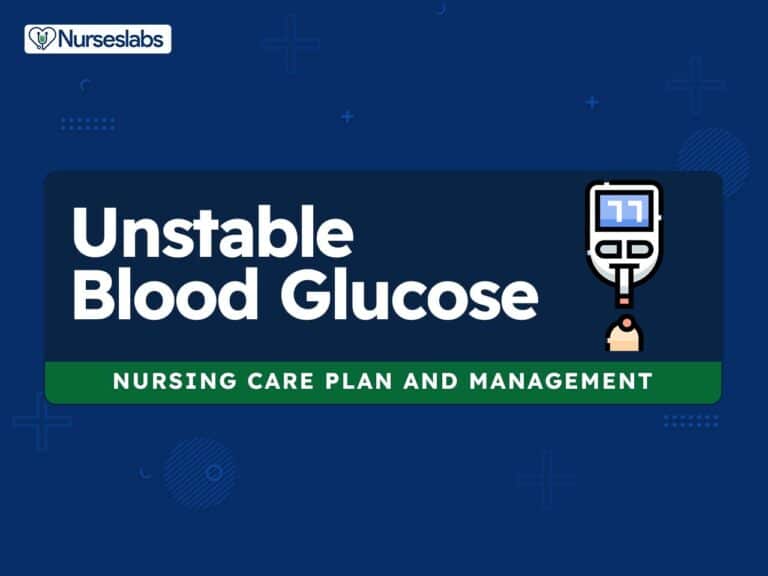
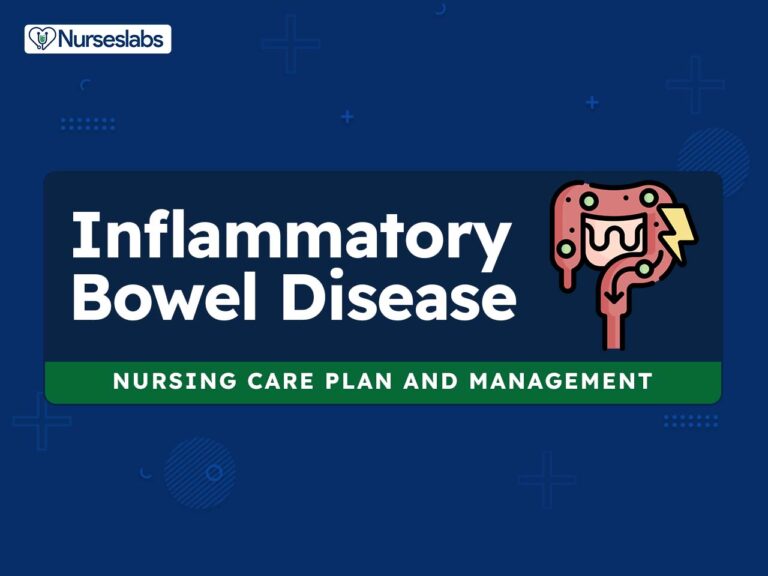
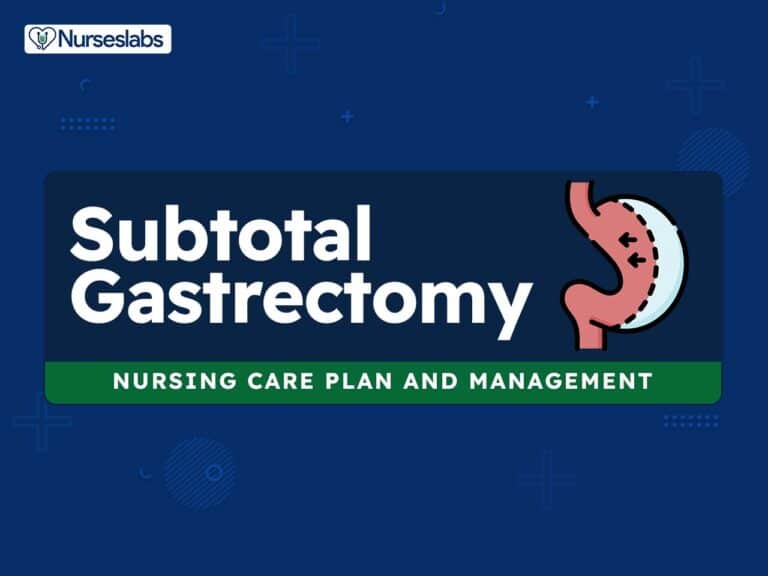






Leave a Comment